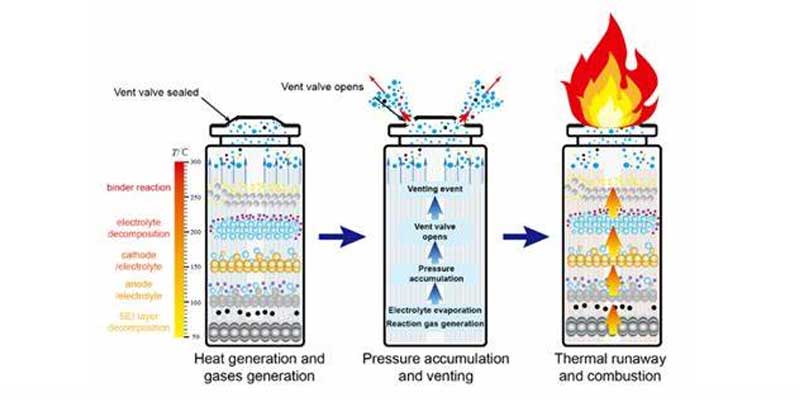Are sodium ion batteries safe
Are Sodium Ion Batteries Safe? A Comprehensive Analysis of Their Safety
Introduction to Sodium Ion Batteries
Sodium ion batteries have emerged as an intriguing alternative to conventional lithium-ion batteries, thanks to their potentially lower environmental impact and cost. Unlike lithium, sodium is abundantly available and features properties that could make these batteries safer and more sustainable.
-
Abundance and Accessibility: Sodium is the sixth most abundant element on Earth, predominantly found in common salt (NaCl). This abundance ensures a steady and sustainable supply chain, which contrasts sharply with the geographically concentrated and often environmentally disruptive lithium mining processes.
-
Cost-Effective Resource: The economic benefits of using sodium over lithium are significant. Sodium’s plentiful nature translates into lower costs for raw materials, which can help reduce the overall price of battery production, making energy storage solutions more accessible worldwide.
-
Safety Through Chemistry: Sodium’s larger ionic size compared to lithium provides intrinsic safety advantages. These include a reduced tendency for dendrite formation—a common problem in lithium-ion batteries that often leads to short circuits and thermal events.
Detailed Safety Features of Sodium Ion Batteries
The design and composition of sodium ion batteries incorporate several key features aimed at enhancing their safety, making them suitable for a wide range of applications from grid storage to electric vehicles.
-
Electrolyte Options and Innovations: Researchers are developing various electrolyte formulations for sodium ion batteries, including aqueous and solid-state options. Aqueous electrolytes significantly reduce the risk of fire since they do not flammable like the organic solvents used in conventional lithium-ion batteries. Solid-state electrolytes offer even greater safety by eliminating the liquid component, which is often a vulnerability point for leaks and chemical instability.
-
Thermal Stability: Sodium ion batteries generally operate at higher internal temperatures without degrading. This attribute stems from sodium’s inherent chemical stability, which is less prone to violent reactions if the battery is damaged or improperly handled.
-
Robust Cell Design: Advances in cathode and anode materials specifically tailored for sodium ion technology not only improve the battery’s energy density and efficiency but also enhance its structural integrity. This reduces the likelihood of mechanical failure that could lead to safety incidents.
Comparative Analysis with Lithium-Ion Batteries
Understanding the safety of sodium ion batteries involves a direct comparison with lithium-ion technologies, particularly in terms of thermal management and reaction to physical stress.
-
Risk of Thermal Runaway: Lithium-ion batteries can undergo thermal runaway, where an increase in temperature leads to a self-sustaining cycle of heating that can cause fires or explosions. Sodium ion batteries, with their inherently more stable heat management, are less susceptible to this phenomenon.
-
Incidence of Safety Failures: Empirical data shows that sodium-ion batteries have a lower rate of safety incidents compared to lithium-ion batteries. This data is critical as it reflects real-world usage and provides insights into the operational safety of sodium-ion batteries under typical and extreme conditions.
-
Regulatory Compliance and Safety Testing: Both battery types are subjected to rigorous safety standards that test their response to overcharge, puncture, crushing, and environmental extremes. Sodium ion batteries often exhibit superior performance in these tests due to their stable chemical and physical properties.
Himax Electronics: Enhancing Battery Safety Through Innovation
Himax Electronics is dedicated to advancing sodium-ion battery technology with a keen focus on safety. Their efforts encompass several strategic areas:
-
Advanced Battery Management Systems (BMS): Himax’s BMS technology is designed to enhance safety and longevity. It includes precise monitoring of charge states, temperature, and voltage to prevent unsafe operating conditions. Advanced algorithms predict and mitigate potential issues before they become safety hazards.
-
Material Science Innovations: Himax invests in developing new materials that enhance the thermal stability and mechanical integrity of sodium-ion batteries. These materials help prevent the common causes of battery failures, such as electrolyte degradation and separator breakdown.
-
Sustainability and Safety Integration: Himax’s approach integrates sustainability with safety. They prioritize the use of environmentally friendly materials that are also non-toxic and stable, reducing the potential for hazardous chemical reactions.
Conclusion
Sodium-ion batteries offer significant safety advantages that make them an attractive option for applications requiring reliable and safe energy storage solutions. The ongoing advancements in battery technology, particularly by companies like Himax Electronics, are critical in addressing the remaining challenges and enhancing the overall safety profile of these batteries.
Himax Electronics remains committed to leading the charge in sodium ion battery safety, continuously developing technologies that improve performance and ensure safety across all applications. Their dedication to innovation and safety is pivotal in driving the adoption of sodium ion batteries in the global market.





